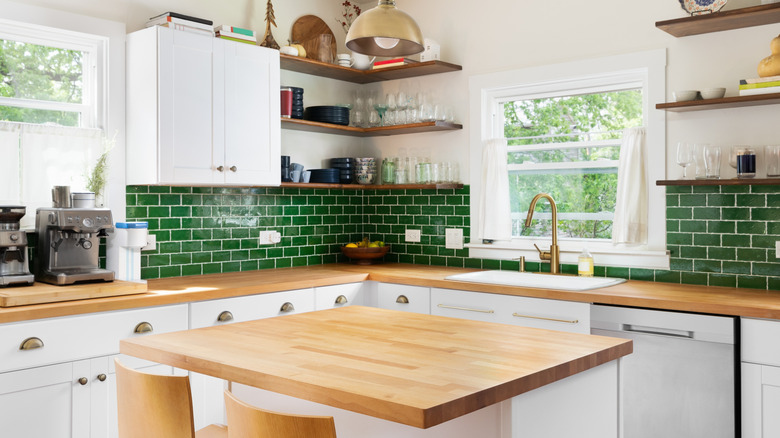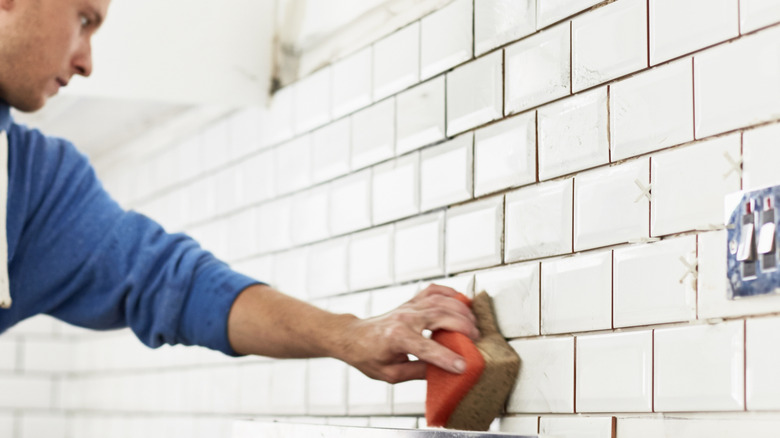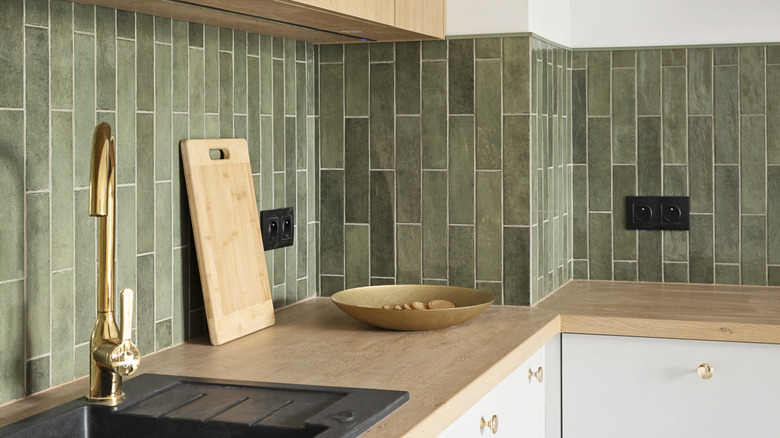The Unavoidable Disadvantages Of Subway Tile For Kitchen Backsplashes
When choosing a backsplash for your kitchen, there is a lot to consider. You want something that looks nice and matches the decor of your kitchen and is easy to clean. Subway tiles fit this description and are one of the most popular backsplash choices. They come in a wide variety of sizes and colors, which means that whether you're going for a large-tiled modern aesthetic or a colorful retro look, you'll probably be able to find a set of tiles you like. They can also be painted, so if you want to change the look of your kitchen, you don't need to redo your backsplash.
Nothing is without downsides, though. There are some unavoidable disadvantages of subway tiles. They can be a pain to install if you go the DIY route, the grout can become mildewy and damaged, and the tiles can crack and chip.
Since this is a semi-permanent decision, if you're looking to upgrade your kitchen backsplash to subway tiles, it's a good idea to be fully informed. Knowing what you're getting into can help you prepare for the inevitabilities. It's also a good idea to have some alternatives in your back pocket in case you find that subway tiles are not right for your kitchen.
The downsides of a subway tile backsplash
Most of the issues people experience with subway tile backsplashes lie with the grout that's used to fill the spaces between the tiles. If you have subway tiles in your shower, you may already know how much maintenance grout takes. It needs to be cleaned frequently due to its porous nature, and even then, it's still prone to mold and mildew accumulation from moisture, as well as staining and peeling. Of course, your kitchen backsplash won't be exposed to anywhere near the moisture levels of a shower, but these things can still become issues over time. You may end up needing to regrout or remove the backsplash entirely and replace it with something more low-maintenance.
Another disadvantage of a subway tile backsplash is the installation process. It can be time-consuming and messy for those who have never installed subway tile before. Also, to put up a tile backsplash, you need to use heavy equipment like a tile saw and an oscillating tool, which is not in everyone's wheelhouse. In short, making a subway tile backsplash might end up being more work than you bargained for. Of course, hiring a contractor could be an option, though that is not in everyone's budget.
A smaller but still present issue with subway tiles is chipping. Pots, pans, and cutting boards can bang against them, causing them to crack and chip. These broken tiles would need to be repaired or replaced. This can be time-consuming and messy.
Alternatives to subway tile for your kitchen
If, after reading the downsides to this type of backsplash, you have decided that it's not right for you, there are alternatives. For a tile backsplash without the grout, you might consider zellige tile (or any other type of clay tile). To install these tiles, you don't use spacers, but instead place the tiles directly touching each other. You will still need to apply sealant where the tiles meet the counter, though.
If you are happy to have the aesthetics of a tile backsplash without the actual tiles, a peel-and-stick backsplash could be a good option. These faux tile sheets are easy to install and take almost no time at all. This is also a great option due to the variety of colors and tile styles in which they can be purchased. Just as with real subway tiles, though, the peel-and-stick tiles have downsides, as well. Over time, moisture will break down the adhesive. The glue can also damage the wall behind the tiles.


